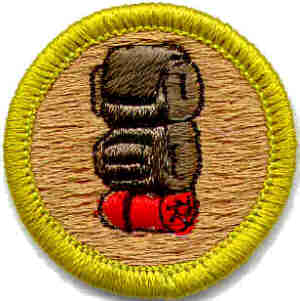
Backpacking
- Show that you know first aid for injuries or illnesses that could occur while backpacking, including hypothermia, heatstroke, heat exhaustion, frostbite, dehydration, sunburn, insect stings, tick bites, snakebite, blisters, and hyperventilation.
- Do the following:
- List 10 items which are essential to be carried on any overnight backpacking trek and explain why each item is necessary.
- Describe 10 ways you can limit the weight and bulk to be carried in your pack without jeopardizing your health and safety.
- Do the following:
- Define limits on the number of backpackers that should be on a backpacking crew.
- Explain the reason for the upper limit and the lower limit in a backpacking crew.
- Tell environmental considerations that are important for backpackers and describe five ways to lessen their impact on the environment. Describe proper methods for disposing of solid and liquid wastes.
- Demonstrate two ways to purify water and tell why water purification is essential.
- Demonstrate that you can read topographic maps. While on a hike, use a map and compass to establish your position on the terrain at random times and places.
- Tell how to prepare properly for and deal with inclement weather while on a backpacking trek.
- Do the following:
- Explain the advantages and disadvantages of three different types of backpacking stoves using at least three different types of fuel.
- Demonstrate that you know how to operate a backpacking stove safely and to handle liquid fuel safely.
- Prepare at least three meals using a stove and fuel you can carry in a backpack.
- Do the following:
- Plan a patrol backpacking hike.
- Properly pack your own gear and your share of the crew equipment and food. Protect it against inclement weather. Show that your pack allows you to get quickly to items you may need on the trail and provides for comfort, balance, and neatness. Show how to use effectively a pack frame and hip strap to distribute the weight on your body.
- Conduct a prehike inspection of the patrol and its equipment.
- Carrying your pack, complete a hike of at least 2 miles.
- Take three backpacking treks. Each must consist of at least 3 days duration with two different overnight campsites, and each must cover at least 15 miles. Carry everything you will need throughout the trek.
- Do the following:
- In addition, assist in planning and take a backpacking trek of at least 5 days with at least three different campsites, and covering at least 30 miles. Your written plan submitted to your counselor must include route, food and menus, equipment, and emergency notification. Prepare lightweight, reasonably priced trail menus. Carry everything you need throughout the entire trek.
- On returning, tell what you did to get in shape for this trek and how you might do it differently again.
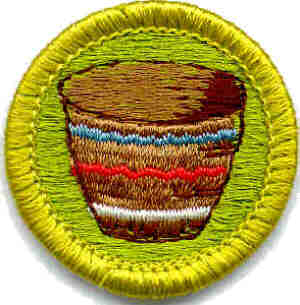
Basketry
- Plan and weave a large basket or tray. Use reed, raffia, or splints.
- Weave a seat for a stool or chair. Use cane or rush.
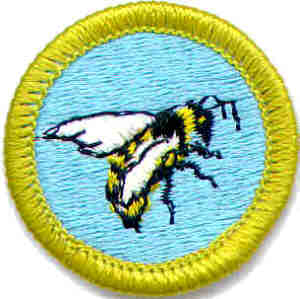
Beekeeping
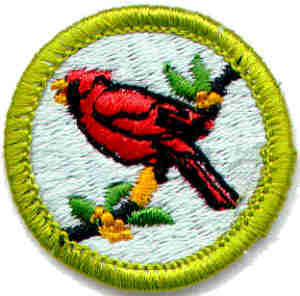
Bird Study
- Spend 3 hours in each of two different kinds of
natural habitats or at two different elevations
(total of 6 hours).
- List the different bird species you see.
- List the numbers of each seen.
- Explain why all birds do not live in the same kind of habitat.
- Spend 3 hours on each of 5 days in a large area (total of 15 hours). List the bird species you can identify by sound or sight. (Requirements 1 and 2 must be done at different times.)
- Recognize, by sound, 10 birds usually found in your neighborhood.
- List 8 families of birds usually found where you live.
- Write a 500-word history about a bird of your
choice. Include the following information:
- Description
- Habitat type
- Feeding habits
- Mating and nesting behavior
- Care of the young
- Migratory habits
- Range
- Any unusual characteristics or behavior you find interesting about the bird.
- Do ONE of the following:
- Make 8 field trips during one season, about 3 months. Keep records of all the birds you see.
- Carefully observe a bird for an hour a day for 10 days. Record your observations.
- Go on an 8-hour Christmas census with a bird club. List all the birds you see.
- Go on an 8-hour May bird census with a bird club. List all the birds you see.
- Visit a bird refuge. Describe its purpose and give the management techniques used.
- Attend a meeting of a bird club such as the local chapter of the National Audubon Society. Report on what you learned.
- Write a 300-word paper on bird behavior.
- Do ONE of the following:
- Build a backyard sanctuary by planting trees and shrubs for food and cover. Describe what birds you hope to attract and why.
- Build 3 bird feeders of different kinds. Keep them stocked with food for 3 months in winter. Describe what kinds of birds are attracted to them. Indicate what kinds of foods were liked best.
- Take twelve clear, sharp, recognizable pictures of twelve species of birds.
- Build a watering device for birds. Keep it filled for 3 months. Tell what kinds of birds used it. Describe any interesting things you saw.
- Build a birdhouse or nesting box. Study the nesting habits of birds that use the structure. Provide nesting materials for the birds.
- Do ONE of the following:
- Select one species of bird that eats other animals. Indicate its place in nature and briefly discuss its importance.
- Make a migration (flyway)map of the United States. Name some of the birds that use each flyway or migration route. Tell where they nest. Tell where they winter. Describe birdbanding.
- Make a list of the extinct or declining birds of the United States. Describe some of the chief causes for this decline.
---------------------------------------------------------------------------------- -->
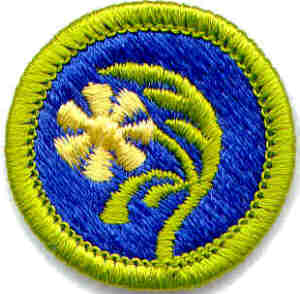
Botany
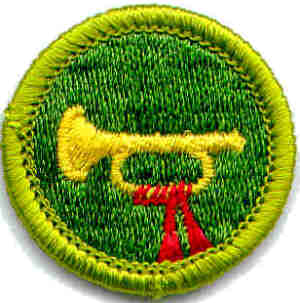
Bugling
- Give a brief history of the bugle.
- Explain and demonstrate how the bugle makes a
sound and explain how the bugle is related to
other brass wind instruments.
- Explain how to care for, clean, and maintain a
bugle.
- Sound the following bugle calls: First Call,
Reveille, Mess, To the Colors, Officers, Drill,
Assembly, Recall, Fatigue, Church, Fire,
Swimming, Retreat, call to Quarters, Taps. *
- Explain when each of the calls in requirement 4
is used.
- Serve as bugler in your troop for 3 months. *
*NOTE: A bugle, trumpet, or cornet may be used to meet these requirements.